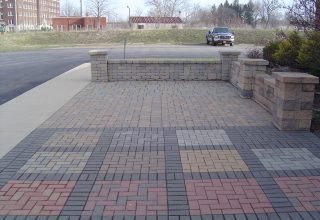Concrete Pavers Miami

What is a concrete paver? What is a brick paver? These two terms are utilized interchangeably when alluding to decorative pavers, in any case, they actually allude to two separate items.
What are Concrete Pavers Made Of?
Concrete Pavers are made from water, sand, bond, aggregate (a bit up rocks or reused concrete), and shading color. The vast majority of pavers in Miami and all through Florida are Concrete Pavers. The reason for this is that Florida has an abundant supply of the natural ingredients that go into making Concrete Pavers.
Then again, brick pavers are made from clay and from Florida has little naturally happening clay, clay or brick pavers are not much of the time delivered here, but rather instead generally transported in from states like Georgia and the Carolinas. Subsequently, Brick Pavers are less as often as possible utilized because of their expense.
Having to transport heavy materials to hundreds or thousands of miles is not cheap or productive, in this way, clay brick pavers can cost almost twofold what concrete pavers do.
Concrete Paver Manufacturing Process
When concrete pavers are manufactured, they have to dry. Concrete is actually always drying, even years after pouring, yet generally speaking, concrete pavers will lose a large portion of their dampness inside of the a month after generation.
One of the greatest challenges with recently delivered pavers is that since they aren’t completely cured, contingent upon the application, you can have some crack early on in the installation.
This happens generally with flimsy, one-inch pavers. Another challenge is that in the event that you want to seal your pavers – which you ought to! – You will want to wait at least a month, if not two, contingent upon the weather before applying a sealer.
Concrete Paver Installation
In the wet summer months, it is best to give recently installed pavers more opportunity to lose this dampness. In the event that concrete pavers are sealed before they have appropriately cured, the sealer will secure in the dampness that is attempting to escape from the pavers and after some time, the vender will turn a shady white shading.
This destroys the tasteful appeal of the pavers and is an exceptionally intense issue to cure. In this way, to be safe, wait 6 to 8 weeks before sealing your new pavers as almost all pavers installed in South Florida are close to two or three weeks old.
General step-by-step guide to the process of installing concrete pavers:
- Plan Your Layout: Determine the area where you’ll install the pavers. Consider the shape and size of the area, and choose a paver design that complements your landscape or property.
- Prepare the Site: Remove any grass or plants from the area. Then, dig out the soil to the depth necessary for your pavers and base materials. The depth will depend on the pavers’ thickness and whether they’re for a driveway, walkway, or patio.
- Install Edging and Geotextile Fabric: Install sturdy edging around the area’s perimeter to hold the pavers in place. Lay down geotextile fabric to improve soil stability and prevent weed growth if necessary.
- Create the Base: Fill the excavated area with a base material layer, typically crushed stone or gravel. This provides a stable foundation for your pavers. Compact the base using a plate compactor to ensure a firm, even surface.
- Install the Sand Layer: Add a layer of coarse, sharp sand on top of the base material. This layer should be level and compact.
- Lay the Pavers: Begin laying your concrete pavers on the sand, starting from one corner and working your way across. Use spacers to ensure consistent gap size between the pavers. Keep checking that the pavers are level as you work.
- Cut Pavers (if necessary): If your design includes curves or specific shapes, you may need to cut some pavers. You can do this using a wet saw with a diamond blade.
- Install Jointing Sand: Once all pavers are laid, spread jointing sand over the top and use a broom to sweep it into the gaps between the pavers.
- Compact and Seal: Compact the pavers again to settle the jointing sand, adding more if necessary. Finally, apply a sealer to protect your new concrete paver installation from stains and weather damage.
If you’re looking for Concrete Paver installation services in Miami or Broward County, Southern Asphalt Engineering is the best contractor to call. With over 25 years in concrete and asphalt construction experience, we pride ourselves in completing your project on time and under budget. Contact us today for a free estimate for your Concrete Paver project!